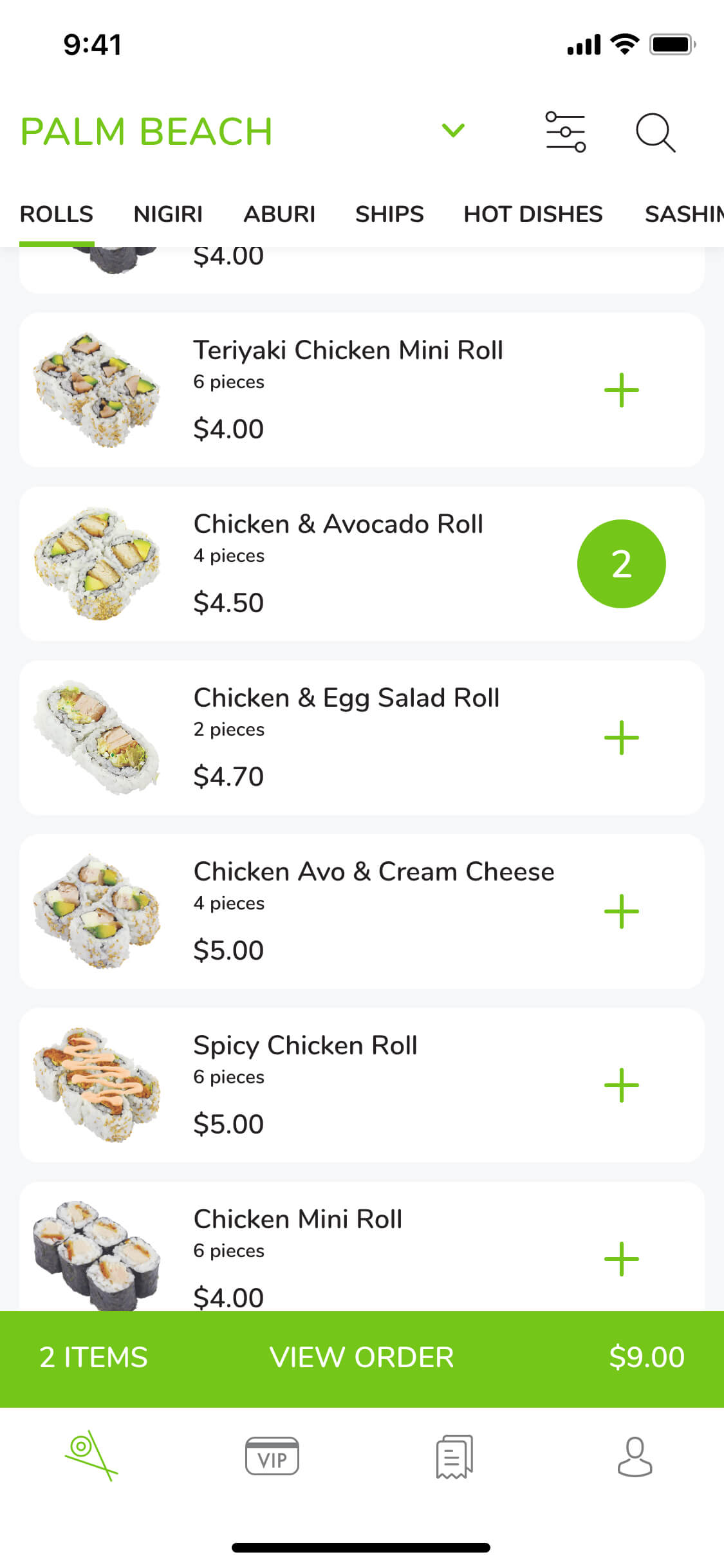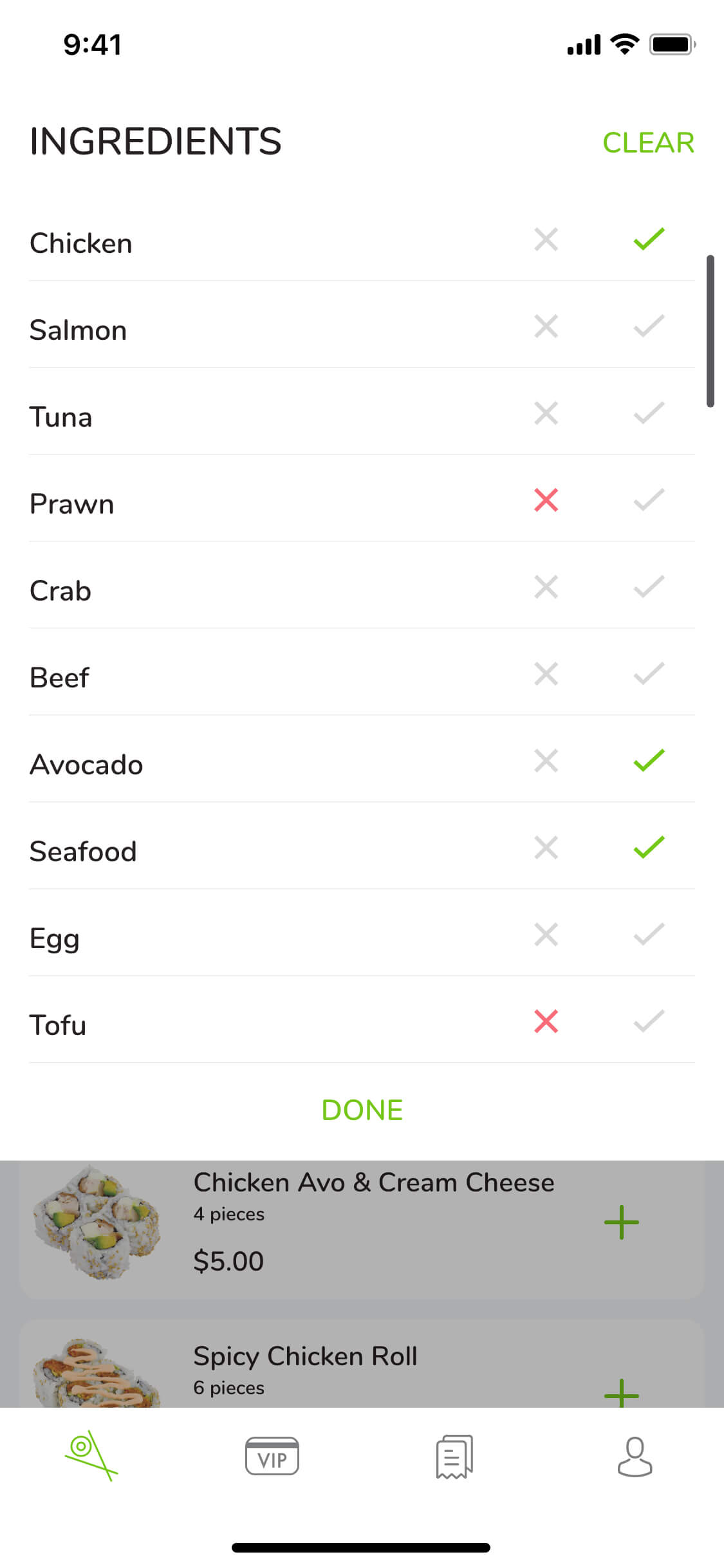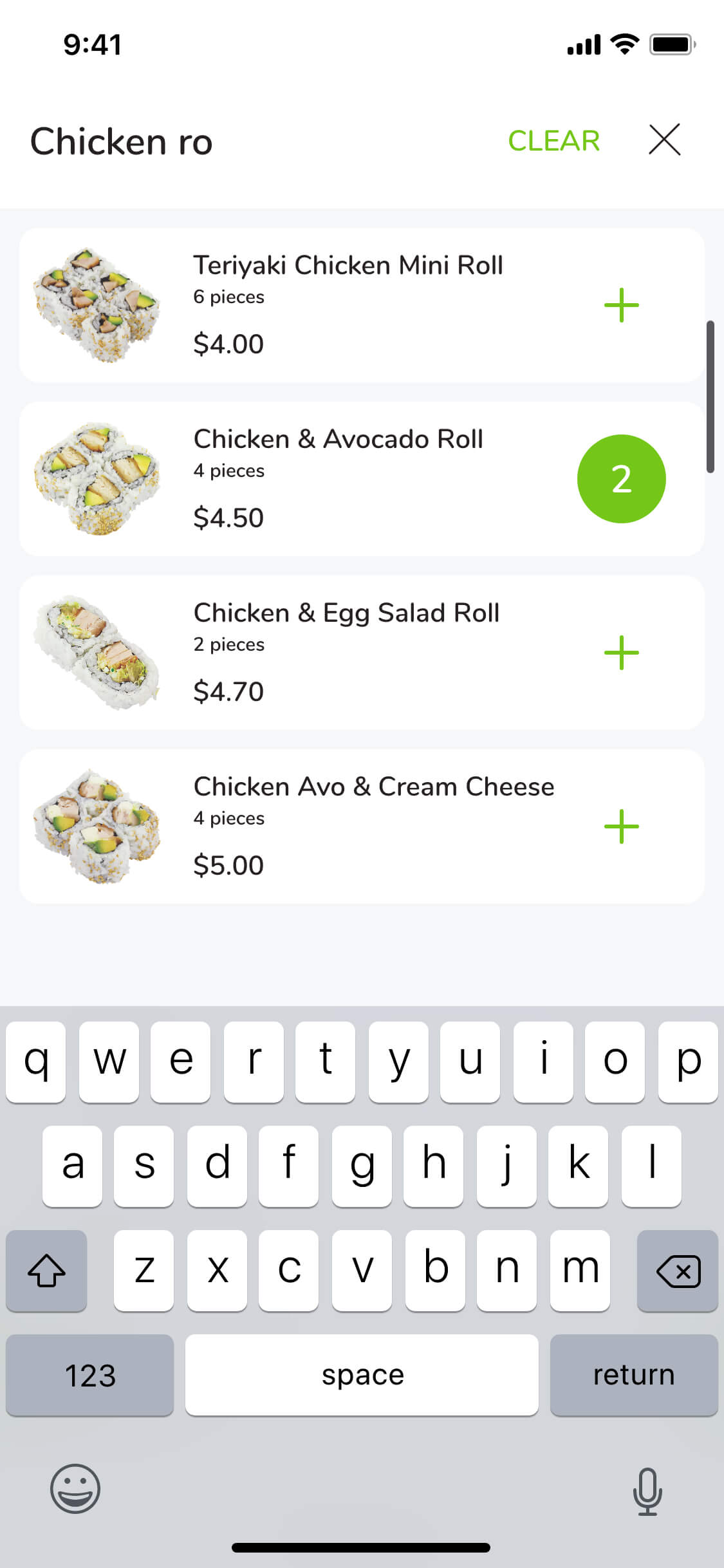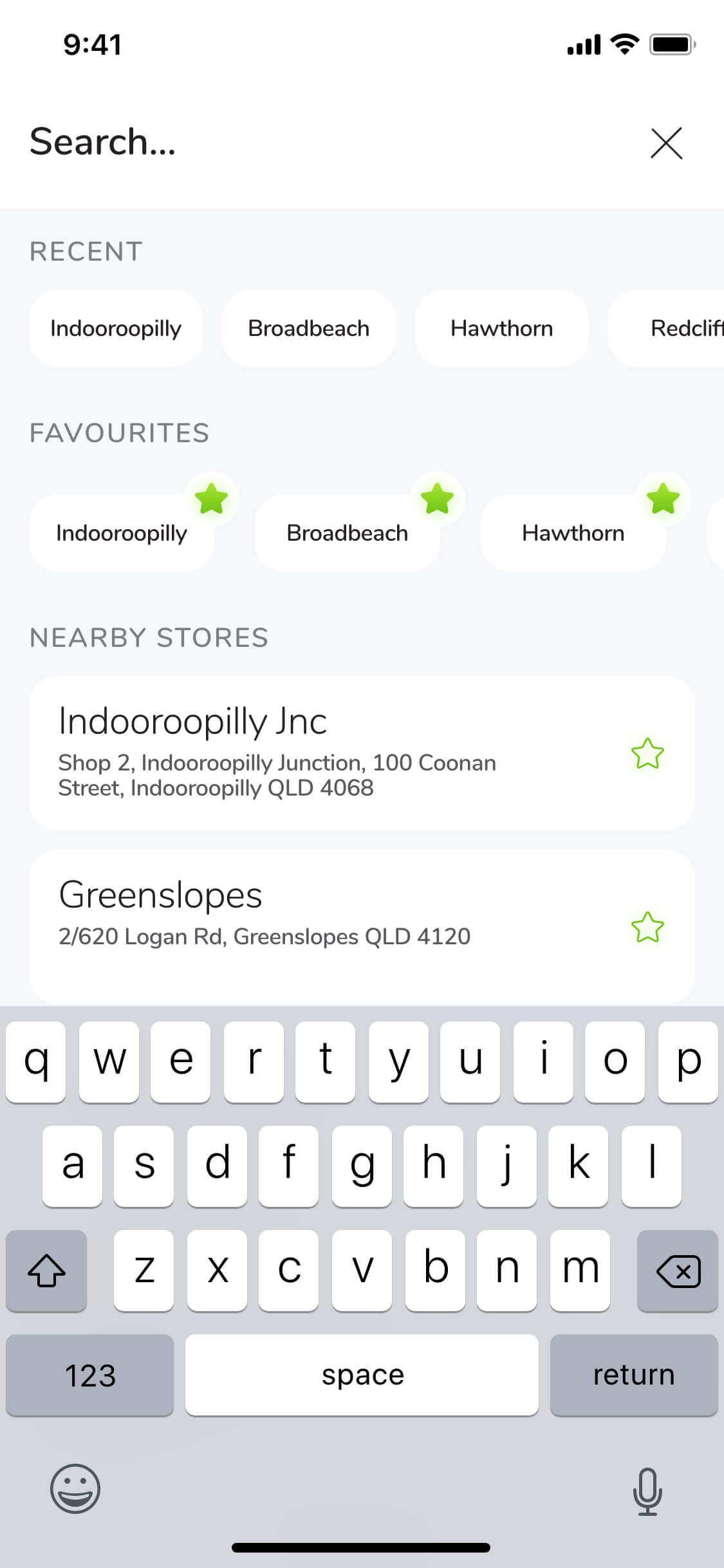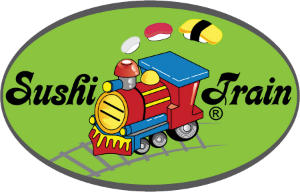
Sushi Train
Mobile App
As they continue to grow their franchise, the Sushi Train company saw a need and opportunity to strengthen their hospitality empire with a native mobile app. The vision was to create a product that blended an existing loyalty card system with a bespoke food-ordering platform that could encompass multiple stores, each with their own individual menu offerings.
Project Objective
Design a mobile app that digitalised the loyalty card experience, and enabled users to order takeaway food from their chosen Sushi Train outlet.
My Role
Products Used
Users + Research
Client Findings
Through client meetings, interviews, marketing and sales reports, and personal experience, I was quickly able to establish Sushi Train already had an avid customer-base, particularly in Qld and northern NSW.
Additionally, their VIP loyalty card is widely adopted, however limited to no customer data is collected due to a non-digital registration system, and individual store practices. Unfortunately, information on key demographics and purchasing behaviours was limited at best.
In terms of takeaway ordering, some stores had begun offering limited Uber Eats or Deliveroo services, however this was not company-wide policy and up to individual franchisees to determine viability.
User Research
As a Gold Coast expat and loyal Sushi Train customer myself, I already had some valuable insights into the brand experience, customer expectations, and their market appeal. Additionally, I was able to conduct interviews with a selection of people I knew would be able to give experience-based feedback and recommendations.
My findings were as expected; being a mainstay for casual dining, particularly for the following:
- 16-24yo casual social meals, usually in groups of 3+
- 25-34yo casual dining, usually in groups of 2
- Young to middle-age families with children above 3 years
Among all parties, brand affiliation was high, and the special events such as their bi-annual “All plates for $3” were big draw-cards for customers. When asked about expectations in a VIP loyalty and ordering app, all interviewees were positive about a digitalised VIP card (many had lost their physical card at least once), and most stated they expected ease-of-use and ordering on-demand as their priorities from a takeaway system.
3 Key Challenges
1
Delivering an experience that built upon and strengthened the brand
2
Digitalising a loyalty system in a way that was meaningful and convenient
3
Deliver an intuitive ordering system with accepted user practices and easy-to-use menu navigation
Design Solutions
- Fun & Friendly experience
- Smart user login/sign-up
- Camera-based VIP card recognition (OCR)
- Advanced term-based search
- Search results ordered by popularity
- Re-order functionality
- Location-based store selector
- Switch-stores prompt
- Familiar ordering UI
- Point redemption at checkout
- Order tracker
Design Outcomes
Onboarding
New User
In both onboarding examples, the experience seeks to delight the user with friendly bright colours, enticing interaction animations, and playful graphic elements such as the sushi illustrations.
To streamline the experience, the app queries the user database for an existing account by email, which in turn determines the next screen. This removes a barrier to entry with a 'login or signup' decision. Additionally, the app will remember the user's email, and only ask for a password after a pre-determined authentication expiry time (i.e. 1 week).
Onboarding
Existing User
When the user database query returns the user as existing, the app efficiently transitions to a password request, and then into the app.
The default view lands on the user's VIP card, with the barcode on the upper portion of the display, ready to be scanned in the store.
Users are then able to navigate between upcoming promotions, their VIP point history, and browse a VIP shop.
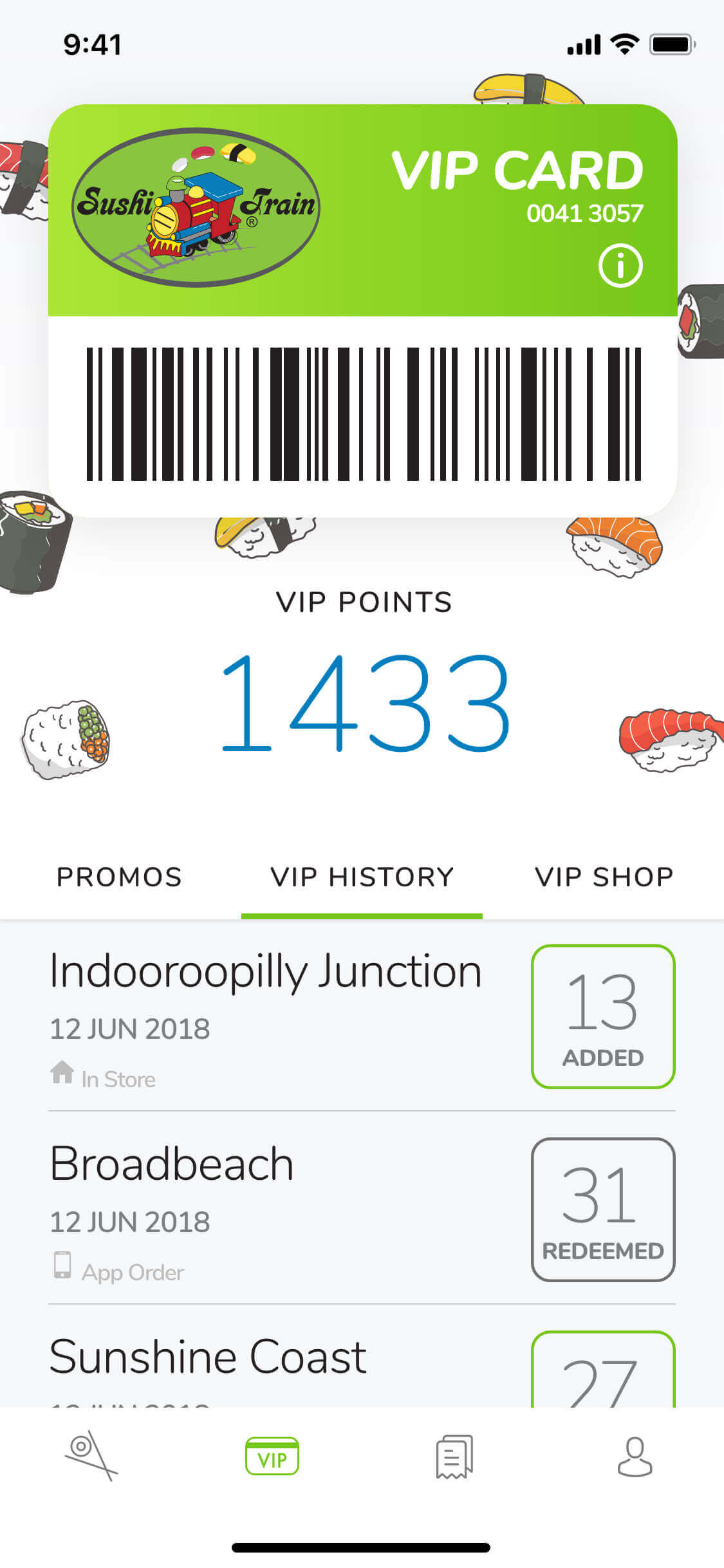
This is the default view when the user has logged in. From here they can quickly scan their card at POS, view their current VIP points, and recent VIP activity.
On the user's intial scroll, the top card and VIP counter animates away to allow room for the VIP activity statement.
